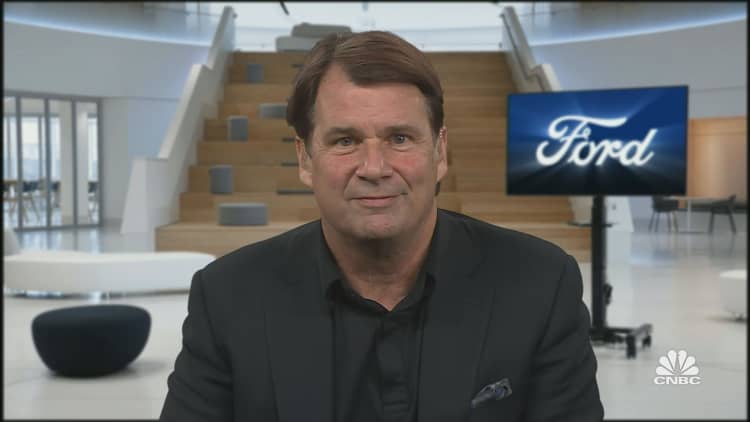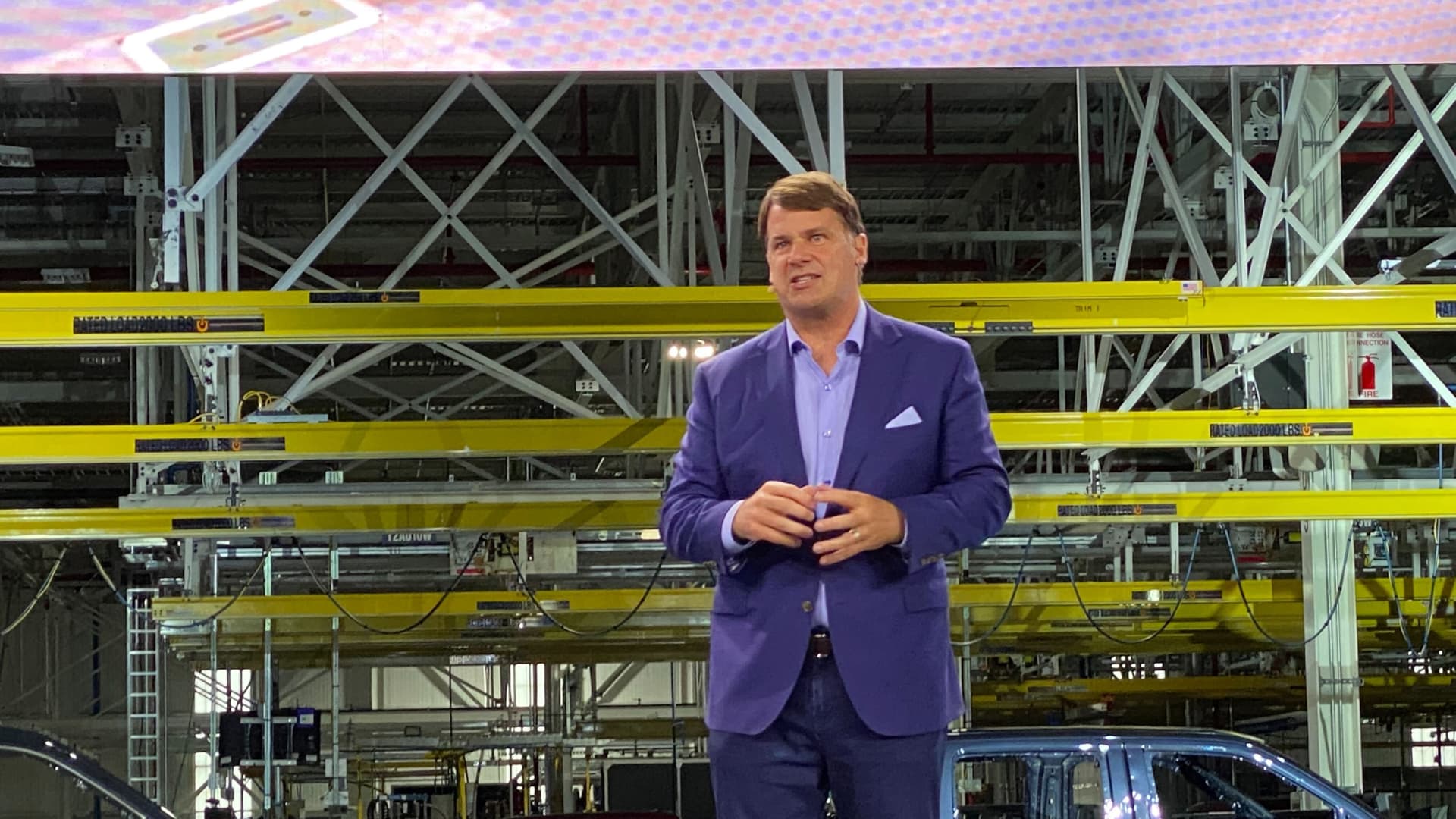Ford CEO Jim Farley’s frustration builds as he vows to transform the automaker

Ford CEO Jim Farley is frustrated.
The company’s fourth-quarter earnings on Thursday missed analyst expectations by a wide margin, as costs and supply chain issues again hurt Ford’s bottom line, Farley knows his company needs to change.
“We have to change our cost profile,” Farley told CNBC after a call with analysts to discuss the quarter’s results. “We know what we have to go after. I’d love to give you all the metrics and all the specific gaps we see. But you know, whether it’s absenteeism, the number of sequencing centers, the number of wiring harnesses we have, we know what it is.”
In short, Farley wants Ford to become a far more efficient company, and he needs it to happen quickly.
The push to transform Ford is taking on greater urgency after the automaker reported 2022 adjusted earnings of $10.4 billion, just three months after the company told analysts it expected to make $11.5 billion to $12.5 billion in that year.
How did Ford fall more than a billion dollars shy of hitting a profit target it gave Wall Street at the end of October?
Blame it on poor execution and higher-than-expected costs. Last quarter, Ford said, overcoming supply chain challenges, including a shortage of semiconductor chips, increased costs by $1 billion more than planned. Ford production was 100,000 vehicles shy of what the automaker expected to build.
Ford workers produce the electric F-150 Lightning pickup on Dec. 13, 2022, at the automaker’s Ford Rouge Electric Vehicle Center.
Michael Wayland | CNBC
Supply chain and cost issues hurt Ford over the last two years. Last September, Ford warned third-quarter costs would be $1 billion greater than expected. For the last two years, high warranty costs — from recalls and troubled launches of new vehicles — were a problem that Farley and his team have been unable to fix.
Farley said Ford’s complexity is part of the problem.
“We have a lot of complexity relative to the customer and also inside our company. And we can cut the customer-facing complexity like we have, but it takes time to work that down to parts on the line, to the manufacturing line,” he said. “It just takes time to work through that and that’s what we’ll do.”
While discussing the fourth-quarter results with Wall Street analysts, Ford’s leadership declined to detail the specific steps it will take to cut costs and make the automaker more efficient and profitable.
Farley said the answer is not simply cutting jobs, which has historically been the way automakers have cut costs. “There are things we could do in the short term, but I don’t want to just make the output the cuts without redesigning the work. This has to be sustainable and that’s how we’re thinking about it nowadays,” he said.
Will this new push to cut costs hurt Ford’s growth in production and sales of electric vehicles? Farley said no.
In fact, he said he believes separating the EV and internal combustion engine vehicle operations into two distinct divisions will actually accelerate efforts to drive greater efficiency. To prove his point, Farley says Ford’s second generation of EVs will be radically simplified, which should eventually lead to fewer problems and higher margins.
“I can’t wait to show you and the whole world this next cycle of products,” he said. “Many of our competitors are just coming out with their first cycle and we can see their batteries are too big. Their distribution costs are too expensive. They’re spending too much money on advertising. You know, we can’t do that. We don’t plan on doing that.”
A Ford Mustang Mach-E GT at the 2022 New York International Auto Show in New York in April that year.
Jeenah Moon | Bloomberg | Getty Images
When Farley became CEO of Ford in October 2020, he vowed to quickly drive the automaker into a new leg of growth led by electric models like the Mustang Mach-E, the E-Transit commercial van and the F-150 Lightning.
And in many ways, he has succeeded. Ford is No. 2 in EV sales in the United States, with just under 8% market share.
While it’s not close to catching up with Tesla, which sells two out of every three EVs in the U.S., Ford’s EV production is increasing rapidly. At the end of last year, Ford was building 12,000 EVs a month. By the end of 2023, Ford expects EV production will reach 50,000 a month.
Still, for all of its accomplishments transitioning to EVs, Ford continues to face issues with internal combustion engine vehicles, which are responsible for almost all of Ford’s profits.
Farley knows investors are watching and waiting for Ford to finally get its act together.
“Be patient. You know, we got the right team. We got the right plan. We’re growing like heck in our pro and EV business,” Farley said when asked what he would say to Ford shareholders. “This key team is going to deliver for you and you are going to get a great return on your investment.”
— CNBC’s Meghan Reeder contributed to this report.
For all the latest Technology News Click Here

